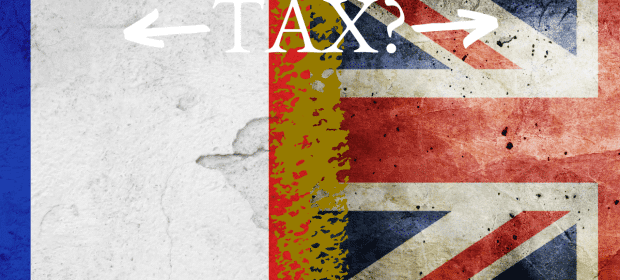Taken from a (fictional) script of a new episode of “Yes Minister”, re-introducing the following cast.
Chancellor of The Exchequer: The Right Honourable Jim Hacker
Permanent Secretary to the Treasury: Sir Humphrey Appleby
Principal Private Secretary to Jim Hacker: Bernard Woolley
Sir Humphrey, bursts into the office of the Chancellor, unannounced, hot, bothered, angry and ranting.
Sir Humphrey: The PM has just announced another election, What is that woman playing at !!. Heavens above it was only weeks ago that we spent ages working on the Budget, which may never come into effect, or at least until it becomes law, by which time we may, heavens forbid, have had a change of government, and have to start all over again. Teaching newcomers about the real facts !!!!!……. How can I run the nations Treasury on that basis????. It reminds of the last time a lady PM was in charge, daring to throw her hand bag around dictating what we could and couldn’t do. It created chaos. We have only just managed to get back to a kind of orderly sensible running of this department and the Civil Service. What is the point of having a Cabinet if you don’t share the information first.!!!!
Bernard: Sir Humphrey, please calm down a little. To be fair, it’s only a few months since the Minister was appointed. It’s not as if he fully knows the ropes yet. Besides, we tried to contact you this morning at your office, immediately after the Cabinet meeting, but were told that you were at your club having breakfast with old friends from Oxford and were not to be disturbed as you were talking about important issues in relation to the Budget.
Sir Humphrey: Minister you should have let me know earlier. Surely the PM must have known that she was going to make this U – turn, despite saying only a few months ago she wasn’t going to have a General Election until 2020. That’s the trouble with politicians, changing their minds, to the whim of the public at a moment’s notice. We seem to be moving to the policies of our neighbours in the EU, in particular Greece, France and Italy along with the US where a populist trend or tweet is considered grounds to react without the calm sensible order to the stability that we in the Civil Service desire.
Jim: The Cabinet meeting was held this morning. This U turn was only discussed this morning. It was felt that it was in the best interests to enable the PM to be elected as the leader of the party best in the position to negotiate a favourable exit. We needed to do this as soon as possible, so that stability is returned quickly. You seem to forget the previous lady P.M., whom you deride, and may I remind you, “Was not for turning”, who was then thrown out of power by a small number of people, and the electorate was not given the chance to vote . This is democracy at its finest, I think the PM should be applauded for taking this risk, as we all are.
Sir Humphrey: calming down…..mumble mumble, …… Minister I suggest we look at the best way to ensure that the best bits of the Budget that can be carried forward and that we can get some additional revenue coming into the State coffers without too much difficulty.
Jim: Mmm, I am a little concerned that perhaps some elements are a little too hasty and need further thought and consideration. We need to consider that the UK is still part of the EU, and is still subject to the freedom of movement of goods and services as enshrined by the EU/EEA constitution.
Sir Humphrey: In the mean time Minister, due to the election and additional delays we still need to make things harder to protect against a possible net capital outflow for those that are bringing forward plans to retire overseas. I was talking this morning to the FCA, along with the friends from Oxford who are either CEO’s of product providers concerned about retaining their funds under management, along those who are trustees of UK pension schemes. Maybe in two years time we will be well shot of the EU and bothersome elements of the EEA, and can then treat ex pats and the Europeans that move back to their original country as one. As for the Scots we are bribing them with more money than we can afford to stay within the UK. However they seem intent on holding another referendum to leave the Union and join the EU. In that event we can borrow President Trump’s brilliant idea by rebuilding Hadrian’s Wall to stop those heathen coming in. And that can be paid for by increasing the duty on their Scotch.
Bernard: errmmm can I remind you Sir Humphrey, that if what is left of the Union leaves the EU, and just stays in the EEA , then what is left might not get the benefits of the subsidies of the Common Agricultural Policy. That could mean that things like Scottish Salmon, Lamb, Beef and Irish butter from remaining members will get these subsidies whilst what remains of the UK won’t as we will have lost the benefits of the CAP.
Sir Humphrey: Look , after all it was the English electorate that voted to leave and they will have no sympathy with any of them whatsoever. This is especially after that brilliant campaign by the Daily Blurb to stop winter fuel payments to pensioners living in the sunny Costa’s.
Jim: Didn’t they have snow on the Costa’s recently, that seems pretty wintery to me !
Sir Humphrey: Yes, but Minister , that is once every 30 odd years, a one off .
Jim: About the same number of years since there has been snow in London on Christmas Day then!!!!! Their homes are not built for winter, and those that live 10 kms inland have had to suffer cold winters regularly.
A by now exasperated Sir Humphrey: You haven’t given me the chance to explain the wider picture….. We have to take a long term view. The best bit Minister is when 70% of the ex pats return to be with children & grandchildren, or illness, and they eventually need residential care. They will have to pay for this, but not via HMRC taxation, more a sort of stealth tax. Most won’t realize this as it is not direct taxation, but capital assets have to be liquidated to pay to local Social Services under the Care Act. This leaves a maximum of £23,350 per individual that cannot be used for this purpose. It avoids the pesky IHT rules and allowances, with very little being passed to the next generation. That means that they too will have to work longer and harder, still paying tax of course, without the help of a legacy. That solves the problem of demographics, we have to take the longer view. So we hit them on the way out and on the way back in a triple whammy for daring to retire abroad, and not staying to pay taxes in this glorious country of ours as it moves back to its former glories. After all the opportunities we have given to the great British public over the years, for some of them, how dare they move abroad and take their wealth with them. Ungrateful peasants.!!!
Jim: Doesn’t that discriminate against the very idea of freedom and choice, they took a risk. I remember the 60’s and early 70’s when one was limited to the amount of money one could take out of the UK under exchange controls, for those lucky enough to go on holiday abroad in those dark days. My parent’s passports were stamped accordingly to prevent capital flight and a further fall in Sterling. It is wrong, to return to those dark old days and take that freedom away, that’s not playing cricket.
Sir Humphrey: Yes Minister ,but we will also potentially lose further tax payers when some of the companies in the City relocate part of their operations to Europe, along with research companies that may relocate to Scotland so that they still benefit from EU grants. Someone has to pay for that loss and we have to be realistic and find a way that is politically acceptable to the remaining electorate and protect our interests’ as a result of an additional loss to the countries coffers. I know it may not be cricket, but that is a just a game, to which incidentally I will thoroughly enjoy watching from the members pavilion at Lords , after meeting up with the ex leader of UKIP who has just been nominated as a member. Perhaps you’d like to become a member too Minister, I am sure that could be arranged.
Jim: Sir Humphrey, I am pleased for you as a civil servant that you are to be able to spend 5 days off watching a Test Match live. As a working politician I still have the dispatch boxes to go through, and attend to the needs of my constituents. So I am lucky to watch the one hour highlights on TV, so I will have to decline your offer. And there is a minor chance that unlike you I might be out of work in a few weeks time, can’t afford to be a member of Lords, and revert back to a real job.
Moving away from fiction lets deal with the facts
Factual time line.
UK Statutory Residents Test . Finance Act 2013. Note how helpful it is for those coming in, and how difficult it is for those leaving in relation to tax.
UK sited residential property held by ex pats once tax resident abroad. Finance Act 2014. From April 6th 2015, any gain from that date in the value of the property thereafter, upon sale will be liable to UK Capital Gains tax, and as such the gain will be paid directly to UK HMRC.
Care Act 2014.Statutory testing of benefits for care .Introduced two stages April 2015, & then April 2016. The April 2016 element included a revised increased of the thresholds re residual capital and was deferred in April 2015 until at least April 2010 when it will be reviewed again.
FCA ruling. April 2016. Advice and the report required on the potential transfer to a QROP of a Defined Benefit Pensions can only be carried by a UK regulated IFA who charges fees upfront.
Finance Bill March 8th 2017. A potential tax surcharge of 25% of the pot after transferring a UK pension to a QROP.
( Qualifying Recognized Overseas Pension ) Exemptions apply to this particularly if you reside in EEA/EU for five complete tax years after the transfer is completed. A review of all QROP’s providers to see that they match the new rules, in particular those that are outside the EU/EEA area. The rules are more onerous for non EEA / EU residency of both individual and provider. In addition as a “foreign pension” paid to a returning ex pat a QROP will no longer benefit from 90% of this being liable to UK income tax. It will revert to a 100% with immediate effect.
An unusual element of the bill was the fact that it came into effect on the 9th March, allowing no time for those plans already in progress. It is unusual to take such a draconian step and not allow sufficient time for those cases in the process of being progressed to be halted in such a manner.
March 29th 2017. The date the UK formally triggered Article 50 to leave the EU. This has already negated the EU element of the EU/ EEA referred to above re QROP’s.
April 18th 2017 Announcement of UK General Election for June 8th 2017.
A further note is that UK HMRC will still allow personal allowances on taxation of assets held in the UK for non-resident UK citizens living abroad within the EEA. This was dated the 7th April 2017, direct from UK Gov HMRC website. Whether that will continue in the future, will be dependant on the outcome of Brexit negotiations, and that is the great unknown. If you follow the logic applied to the above and the UK does leave the EEA, you have been given at least advance warning.
Most of us as regulated advisers in the EU have come across some UK providers of all manner of, Unit Trusts, ISA’s and Pensions in particular making life extremely difficult too.
So action is required , one has to say immediately, before it is too late. Finally my thanks to the BBC and Antony Jay/Jonathan Lynne for the original Yes Minister,and in particular that episode where Sir Humphrey extols the virtue of the UK remaining in the EU. Thank you for the inspiration to write an updated version that is current, possible and satirical.













